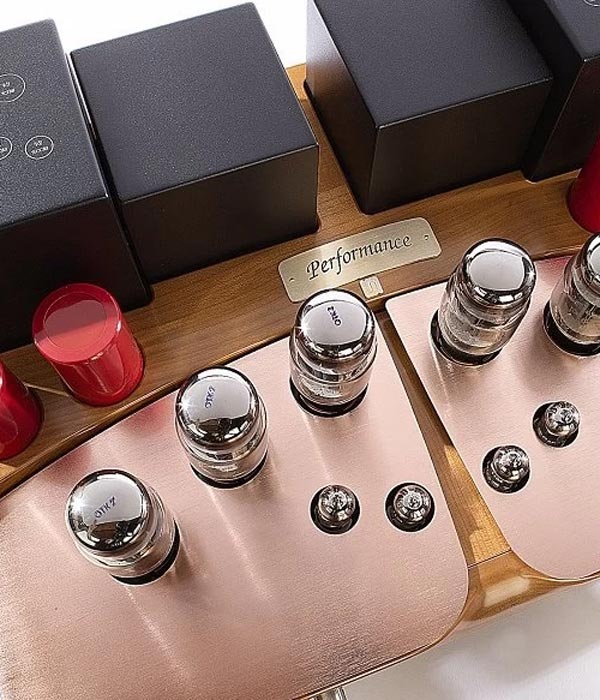The debate between a tube amp and solid-state amplifiers is as old as modern audio technology itself. The truth is that tube amps and solid-state amps are fundamentally different in how they operate, and understanding these differences helps to appreciate their individual traits and what they bring to the table.
Fundamental Differences: Voltage vs. Current
The most significant distinction lies in how these amplifiers operate. Solid-state amplifiers are driven primarily by current across their output devices, while tube amplifiers rely on voltage. This distinction, though technical, has important implications for how each type of amp interacts with a speaker.
A tube amp cannot drive a speaker using voltage alone, which is why output transformers are essential. Most stereo tube amps feature three large, heavy components at the rear: a power transformer and two output transformers—one for each channel. These output transformers convert the high voltage from the output tubes into current that can drive the speakers. Solid-state amps, on the other hand, typically have a single power transformer and no output transformers, relying instead on transistors to deliver the required current directly.
Interestingly, despite their operational differences, both tube and solid-state amps perform the same basic function. The tube works in a glass vacuum using voltage, while the solid-state transistor achieves the same goal using silicon and current. Do they sound different? Most audiophiles would agree they do, but even here, the lines can blur. Some tube manufacturers design their amps to sound more like solid-state equipment (often for increased power), while certain solid-state amps are intentionally voiced to replicate the warmth and richness associated with tubes.
Sound Characteristics: Myths and Realities
One common misconception is that tube amps lack bass control or strength. That may have been true decades ago, but modern tube amplifiers can deliver tight, controlled bass with ease. Similarly, the notion that solid-state amps sound harsh or lack smoothness is outdated. Both types of amplifiers are subject to the design choices and voicing of their manufacturers, and this is why consumers select specific products to suit their tastes.
Every audio product brings with it certain colourations and sonic signatures. Tube amps are generally praised for their ability to deliver a sense of “bloom,” adding texture, warmth, and realism to vocals and instruments, particularly in the midrange frequencies. Solid-state amps, by contrast, often provide greater power output for the price, faster transient response, and enhanced detail retrieval.
A quick sidebar on the subject of tube shortages...you guessed it...another myth. 3/4 of the worlds tubes are used in guitar amps and that market is growing. Prices have fallen back since the pandemic and stock is plentiful for the hifi crowd.
Weighing the Benefits and Drawbacks
Deciding between a tube amp and a solid-state amp depends largely on what you aim to achieve with your audio system. Consider the following generalizations:
- Tube Amps: Offer a richer midrange, a natural bloom to the sound, and a more textured and lifelike presentation. These characteristics make tube amps particularly appealing for systems that sound overly bright, harsh, or fatiguing.
- Drawback: Tube amps require periodic maintenance, such as replacing tubes. For enthusiasts, this small upkeep is part of the charm, but others may see it as an inconvenience.
- Solid-State Amps: Deliver higher power output per dollar, faster dynamics, and more precision in detail retrieval. They work particularly well in systems that feel slow, flat, or overly soft.
- Drawback: While solid-state amps can sound remarkably neutral, some may perceive them as lacking the richness or warmth found in tubes.
System Synergy and Speaker Load
Another critical factor when choosing an amplifier is the nature of your speakers. Some speakers require high power and low-impedance driving capabilities, making solid-state amplifiers a better choice. However, modern speakers are often designed with moderate impedance curves and average efficiency, making them ideal candidates for tube amplification. In such scenarios, a tube amp can redefine what a truly exceptional audio system sounds like.
Musicians and Audiophiles: A Shared Preference for Tubes
A passion for tube amplifiers isn’t limited to certain audiophiles. Many legendary musicians, particularly guitarists, have long favoured tube amps for their ability to deliver rich, dynamic, and harmonically complex tones. Famous guitarists like Eric Clapton, Jimi Hendrix, and Jimmy Page are known for their reliance on tube amplifiers to achieve their iconic sounds. Tube amps, such as the Marshall Super Lead or the Fender Twin Reverb, are celebrated for their ability to produce natural compression, warmth, and harmonic distortion that solid-state amps often struggle to replicate.
Just as musicians value tube amplifiers for their tonal qualities and responsiveness, audiophiles appreciate them for their ability to bring music to life with a sense of texture, warmth, and bloom. The connection between the two worlds lies in the pursuit of an organic and emotionally engaging sound—one that feels alive and real, whether it’s coming from a guitar on stage or a speaker in a listening room. For both musicians and audiophiles, tube technology represents more than just a choice of equipment; it’s a commitment to a timeless sound experience.
The Final Verdict: What’s Right for You?
Ultimately, the decision between a tube amp and a solid-state amp is less about which is superior and more about which aligns with your preferences and your system’s needs. If your setup tends to sound sterile, harsh, or fatiguing, introducing a tube amplifier could breathe new life into your music. On the other hand, if your system feels sluggish or lacks detail, a solid-state amp may be the solution.
Both technologies have evolved significantly over the years, and neither is inherently better. The key lies in evaluating your system’s performance, your listening preferences, and your willingness to maintain the equipment. By carefully weighing these factors, you can make an informed choice that brings out the best in your audio system—and, ultimately, in your music.




Share:
CD Players: The Comeback Kid
Convergence of Expression